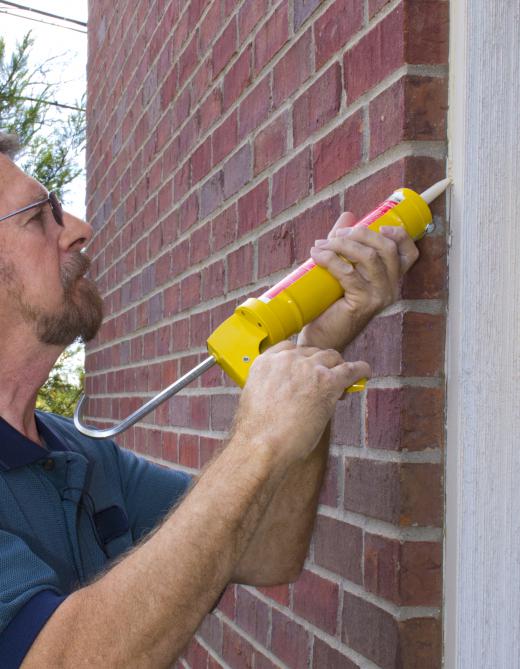Expansion joint sealant is a term used to describe a group of weatherproofing products intended for use as aesthetic or functional sealing agents in gaps in concrete slabs, walk ways, decks, bridges, and sidewalks. Expansion joint sealant materials are chosen for their ability to absorb impact and expand or contract along with the rest of the structure without cracking or separating. These sealing agents include several types of fluid or gel epoxies and solid cork or wood strips. Depending on the expansion joint type, these sealants may be used with or without a backing material.
Expansion joints are generally joints or spaces left between slabs or construction elements of the same material to facilitate expansion and contraction due to changes in ambient temperatures. Although they serve their intended purpose well, they present several aesthetic and practical dilemmas. For example, they tend to be visually unattractive and allow moisture to seep into or under the structure. In addition, they are notorious traps for dirt and grime, and allow grass or weeds to grow through the structure. All of these issues may be addressed by inserting a sealant into the joint gap.

Sealants of this kind are formulated for each specific intended area of use and differ from application to application. The do, however, all need to be able to handle the wear and tear to which the structure is exposed as well as expanding and contracting at the same rate as it does. This prevents the sealant from cracking or separating. For this reason, advice should be sought when choosing an expansion joint sealant to ensure the correct grade.

The material used for expansion joint sealants include low viscosity epoxy resins, silicone gels, polyurethane sealants and cork and woods such as southern yellow pine, redwood, or western cedar. Most liquid or gel sealants are self leveling to ensure a flat, blemish free finish and may be painted or colored to match the rest of the structure. These sealants are usually applied with a caulking gun or directly from a tube. Epoxy and silicone sealants also offer excellent moisture, dirt, and plant exclusion protection. Depending on the type of joint profile in question, these sealants are often used in conjunction with a rubber or foam backing material inserted into the gap prior to sealing.
Polyurethane sealants are ideal for concrete expansion joints. It is a flexible and durable sealant and is most often used in areas such as driveways or side walks. It can also be used with materials such as wood, PVC, and clay. Some new expansion joint sealants are a combination of polyurethane and silicone which has added benefits for abrasion resistance.
Wood strips are also commonly used expansion joint sealant materials. They make for a very visually appealing seal but require more care to install and maintain and lack the same service life as epoxy and silicone sealants. The wood used for joint sealers also needs to be carefully chosen as not all woods are suitable for this application. Dense cork strips are another popular choice although they tend to be unsuitable for high impact or traffic areas.
